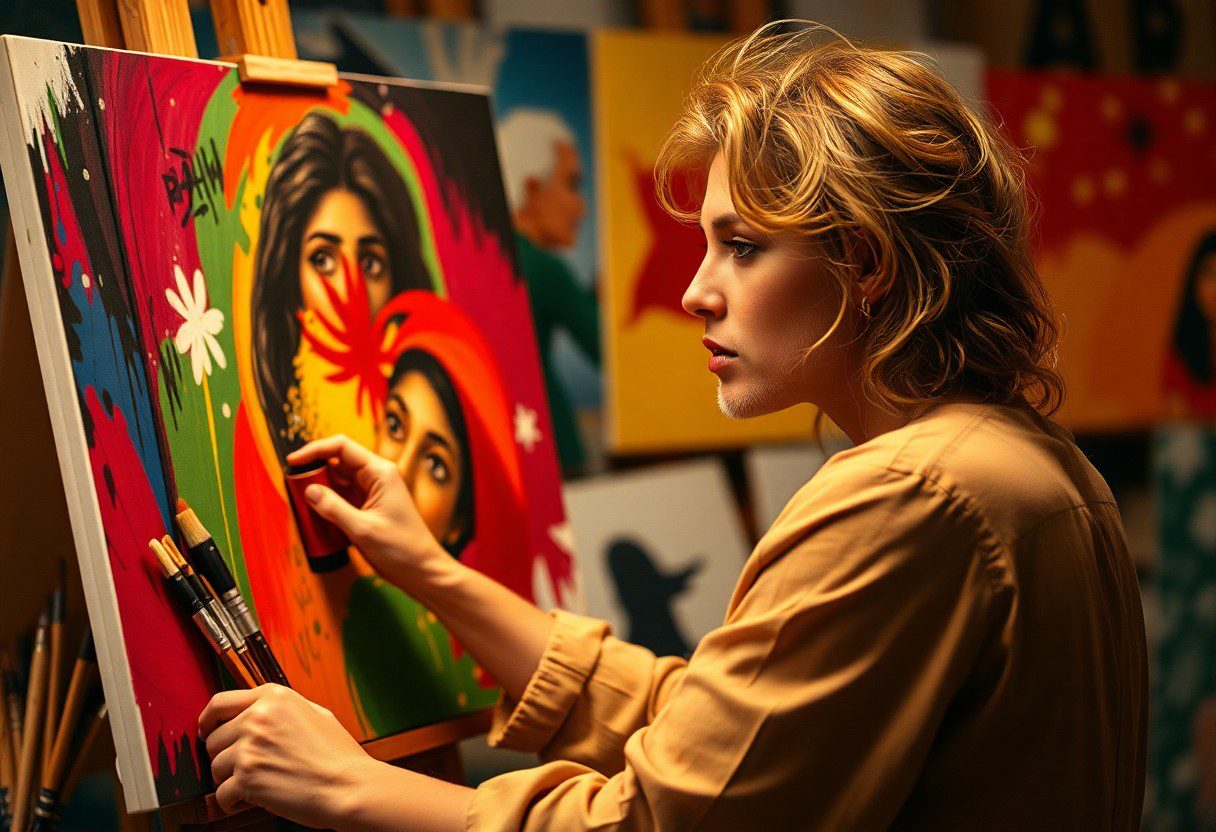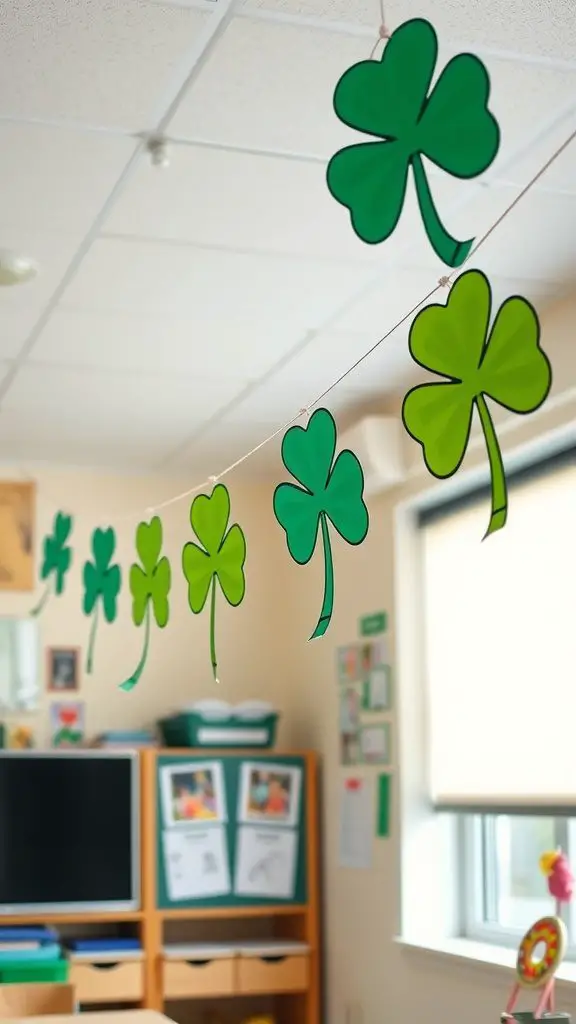Just as colors define a painting, emotions shape your portraits. Understanding how your feelings influence your creative process can elevate your work from mere representation to profound storytelling. By tapping into your own experiences and emotional state, you can bring authenticity and depth to your subjects, allowing them to resonate more profoundly with viewers. In this post, you’ll discover techniques to harness emotional insights, enhancing not only your artistic vision but also the connection you create with your audience through your portraits.
Understanding Emotion in Art
A deep understanding of emotion enhances your artistic expression, allowing you to create more resonant portraits. Emotion acts as a powerful fuel that informs your creative choices, shaping the way you connect with your subject. By recognizing and harnessing these feelings, you elevate not only your work but also the viewer’s experience. This exploration can lead to richer and more meaningful artistic outcomes.
The Psychological Impact of Emotion
Behind every brushstroke and shutter click lies an emotional subtext that influences how you perceive and interpret your art. Emotions are not only personal but also universally relatable; they can evoke empathy and provoke thought in your audience. By tapping into emotional experiences, you foster a deeper connection between your portrait and the viewers’ own feelings, making your work more impactful.
How Emotion Influences Artistic Choices
At each stage of the creative process, emotion plays a significant role in shaping your artistic choices. From color selection to composition and even lighting, your feelings about a subject can direct how you depict them. Each decision is an opportunity to express not just what you see, but what you feel; this authenticity resonates with viewers and invites them into the narrative you are creating.
Emotion shapes your artistic choices in ways that can transform a standard portrait into a captivating story. When you are passionate about a subject, for example, you might choose vibrant colors or expressive poses that reflect your enthusiasm. Conversely, a somber mood may lead you to select subdued tones and softer lines, evoking a sense of intimacy or melancholy. By being attuned to your emotions, you guide the viewer’s experience, enhancing their engagement with your work and allowing them to connect with the essence of your subject on a deeper level.
The Connection Between Emotion and Portraiture
Any successful portrait captures more than just the physical likeness of a subject; it reveals the emotions that define their essence. When you connect with your subject on an emotional level, you create an authentic representation that resonates with viewers. This profound bond allows for storytelling through imagery, transforming ordinary portraits into powerful expressions of humanity.
Capturing Human Experience
One effective way to convey emotion in your portraits is by capturing the depth of human experience. Each person carries a unique story, and by engaging with your subjects, you can unveil their emotional layers. This approach invites the viewer to connect deeply with the portrait, transforming a mere photograph into a vivid narrative filled with warmth and sensitivity.
The Role of Empathy in Portraits
Portraiture relies heavily on your ability to empathize with your subject. By placing yourself in their shoes, you can better understand their emotions, fears, and aspirations, leading to a more intimate representation. This empathetic connection encourages you to communicate their story authentically and creates an inviting atmosphere that allows for genuine expressions.
Capturing the essence of your subject depends largely on your empathetic approach. When you genuinely feel what they are feeling, your portraits reflect a deeper understanding. This connection not only benefits your creative process; it also enriches the observer’s experience, drawing them into the subject’s emotional world and inviting them to explore the intricate tapestry of human emotion displayed in your work.
Techniques for Integrating Emotion in Portraits
Now, integrating emotion into your portraits can elevate your creative process, making your subjects resonate more profoundly with viewers. Emphasizing feelings can be achieved by considering various techniques, such as color choices, composition, and expressions. By consciously selecting elements that reflect the emotion you wish to convey, you can create portraits that tell compelling stories and engage your audience on a deeper level.
Utilizing Color and Composition
Below, you can explore how color and composition significantly impact the emotional tone of your portrait. Warm colors can evoke feelings of intimacy and warmth, while cooler tones can create a sense of distance or tranquility. Additionally, your composition can guide the viewer’s eyes and influence their emotional response, emphasizing specific elements that resonate with the subject’s mood.
The Importance of Expression
Composition plays a pivotal role in communicating emotion through facial expressions and body language in your portraits. The way your subject holds their head, the curve of their smile, or the tilt of their shoulders all contribute to the overall mood and narrative of the piece.
Importance lies in capturing genuine expressions that reveal your subject’s inner world. A subtle smile, a contemplative gaze, or even a moment of vulnerability can evoke a powerful emotional response from the viewer. By focusing on your subject’s unique characteristics and nuances, you can create a compelling connection that draws others into their story, enriching your portraits with authenticity and depth.
Personal Narrative and Emotion
For every artist, your unique story shapes the lens through which you perceive the world. When creating portraits, your personal narrative can inform the emotional depth of your work, translating feelings into visual language. By tapping into your life experiences, you allow your emotions to resonate with viewers, forging a deeper connection that can enhance the impact of your art.
Infusing Personal Experience
Personal experiences shape your artistic voice, allowing you to imbue portraits with authenticity. By reflecting on significant moments from your life, you can consciously integrate those emotions into your artwork. This practice fosters a sense of sincerity and invites the audience to relate to your experiences, bringing an added layer of meaning to each piece.
Drawing from Life Events
Besides personal anecdotes, drawing from meaningful life events can enrich your portraiture. These experiences serve as powerful references that inform the emotion you convey through your subjects. By exploring moments of joy, sorrow, or transformation, you can create portraits that transcend the surface, compelling viewers to engage with your work on a more profound level.
Plus, as you investigate into your life events, consider how each moment has shaped your emotions and perspectives. This introspection allows you to identify specific feelings you wish to express in your portraits. Whether it’s the warmth of a cherished memory or the weight of loss, these nuanced emotions can manifest in the expressions, poses, and colors you choose, leading to portraits that resonate deeply and inspire empathy in your audience.
Overcoming Creative Blocks with Emotion
Your creative blocks can often feel insurmountable, but tapping into your emotions can provide the breakthrough you need. By allowing yourself to connect deeply with what you’re feeling, you can transform those emotions into powerful visual narratives. Embracing your emotional landscape not only fuels your creativity but also adds authenticity to your portraits, enriching the storytelling aspect of your work.
Embracing Vulnerability
About the process of creating portraits, embracing vulnerability is key. Allowing yourself to feel and express your emotions openly can lead to profound moments of creativity. Your willingness to portray your uncertainties and fears can turn into a source of inspiration, enabling you to connect more profoundly with your subjects and viewers alike.
Transforming Negative Emotion into Art
Below the surface, negative emotions like sadness or frustration can serve as a catalyst for artistic expression. Channeling these feelings into your portraits can help you create work that resonates with authenticity and depth. By acknowledging and confronting these emotions, you can convert them into a unique artistic vision that speaks to both you and your audience.
Further, engaging with negative emotions provides a unique opportunity for artistic exploration. When you confront feelings like anger or sorrow, you can express them through color, composition, and subject matter in your portraits. This transformative process often leads to unexpectedly profound insights, giving your work an emotional weight that can captivate viewers and create a lasting impact. Ultimately, allowing negativity to shape your creativity can lead to a deeper understanding of both yourself and your subjects.
Case Studies: Emotion in Portraits
Many renowned portraits demonstrate the impact of emotion on the viewer’s experience. Notable examples include:
- The Mona Lisa: Leonardo da Vinci’s masterpiece evokes mystery and intrigue with an enigmatic smile, sparking countless interpretations.
- Self-Portrait with Bandaged Ear: Vincent van Gogh’s striking self-portrait showcases raw emotion, reflecting his struggles with mental health.
- American Gothic: Grant Wood’s iconic painting captures the stoic resilience of rural America during the Great Depression.
- Portrait of Adele Bloch-Bauer I: Gustav Klimt’s luxurious style conveys both sensuality and longing, illustrating complex emotional depth.
Historic Portraits and Their Emotional Depth
Along the timeline of art history, many portraits encapsulate profound emotions, revealing the vulnerabilities and human experiences of their subjects. From the dignified expressions in Renaissance portraits to the somber gazes of subjects painted during tumultuous times, these artworks serve as windows into the past, allowing you to connect with the emotional landscape of different eras.
Contemporary Artists Who Utilize Emotion
Behind the contemporary art scene, various artists harness emotion to transform their portraits into powerful statements. Whether through bold colors, expressive brushstrokes, or innovative techniques, these creators invite you to witness a deeper narrative within their work. By understanding their intentions and emotional undertones, you can gain valuable insights into your own creative process.
Considering artists like Kehinde Wiley, whose vibrant reinterpretations of classical portraiture challenge societal norms, you can observe how emotion plays a pivotal role in communicating identity and representation. Similarly, the works of Frida Kahlo, characterized by personal pain and resilience, invite you to explore your own vulnerabilities in your artistic journey. Engaging with these contemporary pieces can inspire you to infuse your portraits with raw emotion and authenticity, enhancing the connection with your audience.
Final Words
On the whole, understanding the role of emotion in your creative process for portraits can elevate your work significantly. When you tap into the feelings behind your subjects, you create deeper connections that resonate with viewers. Allow yourself to explore a range of emotions, whether through lighting, composition, or color choices. This emotional depth not only enhances your artistic expression but also invites your audience into a more intimate experience. Embrace these elements, and watch how they transform your portraits into powerful narratives.
FAQ
Q: How do emotions influence artistic decisions when creating portraits?
A: Emotions play a significant role in the artistic choices made during the portrait creation process. Artists often draw upon their own feelings or the emotional state of their subjects to guide decisions related to color, composition, and brushwork. For instance, a joyful expression may inspire vibrant colors and dynamic brushstrokes, while a somber mood might lead to more muted tones and subdued techniques. This emotional connection can greatly enhance the depth and meaning of the portrait.
Q: Can the emotions of the subject affect the final outcome of a portrait?
A: Absolutely. The emotional state of the subject being portrayed can have a profound impact on the final artwork. An artist may capture not just the physical likeness but also the essence of the subject’s emotions, which can evoke a stronger response from viewers. For example, a subject who is nervous or anxious may display subtle cues that, when captured, provide insight into their personality and state of mind, adding layers of complexity to the portrait.
Q: In what ways can artists cultivate their emotional intelligence to enhance their portrait work?
A: Artists can cultivate emotional intelligence through various practices such as active observation, mindfulness, and engaging with diverse experiences. By paying close attention to their own reactions and those of others, artists can better understand and interpret emotions. Participating in conversations, exploring different cultures, and reflecting on personal experiences can also provide deeper insight into human emotion, ultimately enhancing the sensitivity and depth of their portrait work.
Q: How can an artist convey a specific emotion through the use of color in portraits?
A: Color is a powerful tool for conveying emotion in portraiture. For instance, warm colors like reds and yellows can evoke feelings of warmth and excitement, while cool colors such as blues and greens can create a sense of calm or sadness. Additionally, the intensity and saturation of colors can also influence emotional perception; brighter, more saturated colors may express joy, while desaturated, muted hues can communicate melancholy. An artist’s thoughtful application of color can guide the viewer’s emotional response to the work.
Q: What role does vulnerability play in the artist’s creative process when portraying emotions?
A: Vulnerability is an important element in the creative process, as it allows artists to connect authentically with their subjects and explore complex emotions. When artists embrace vulnerability, they open themselves up to genuine expression, which can lead to more honest and compelling portraits. This willingness to expose personal emotions or explore the vulnerabilities of the subject can create a powerful bridge between the artwork and the audience, fostering empathy and connection.




